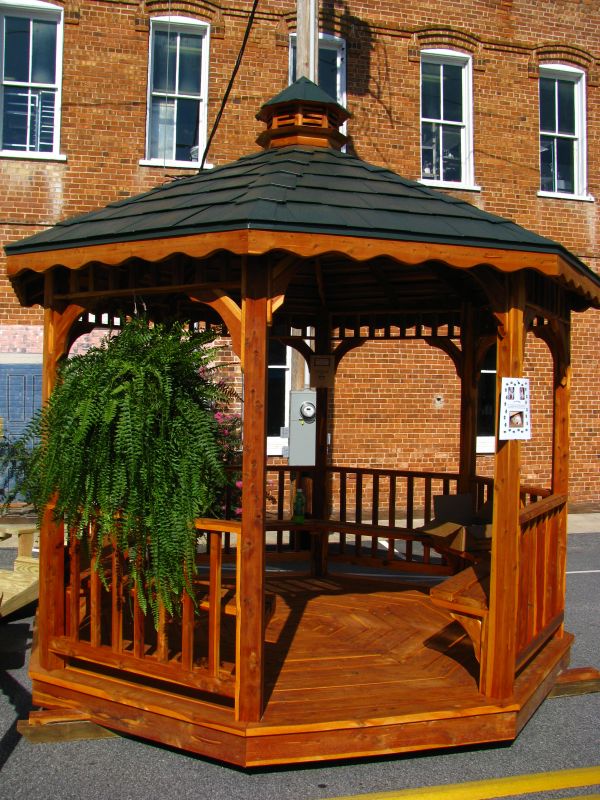Wooden Gazebo Plans : Items To Explore While Constructing A Wooden Pavilion
You mention in the instructions to use metal plates to secure the supports into place but don't have them listed on the materials page. With at least one helper, fit the ends of this truss onto a pair of opposing posts. Siverbush is a lower bush of 2 feet in height but does get up to 4 feet in sunny areas. Typically, you'll need four sturdy supports to place at the corners of the pergola area. Without it, water soaks the tops of the sleepers and the decking prevents the wood from drying. Moreover, these braces have a decorative effect on the pergola, adding value to the project.
It is factory-treated with preservatives that repel rot, insects, and other causes of decay. Assemble one pie wedge at a time, making sure the outside board is flush with the outside edge of the fascia board. Cut the sheets at the right shape and size and smooth the edges with (these details) sandpaper. This may seem quite a wide span for a piece of fairly small section. Cut these lines, removing the lower square corners of the block. A remote-control opens and closes the stair. Take the columns down and cut them to length. Hardware stores offer brackets to assist mounting the columns to the deck.
Any 18-volt cordless drill set on slow speed is strong enough to power such a bit. Drill pilot holes, before inserting the screws trough the elements in the support beams. The pavilion makes a big difference to the view beside our garage when we pull in the driveway. Build one side of the summerhouse at a time. Place the joists equally-spaced and lock them into place with hangers. Make sure you keep an eye out on the 45-degree angles as your roof structure will need to sit flat on the top posts. We measure and mark the depth of the notch first, then use a combination square and scrap piece of wood, to mark the width.
Use it only to fasten to poured concrete-never to concrete block or brick. Since entertaining often revolves around food and drink, you'll want to incorporate everything from grilling equipment to tables and chairs to conversation areas in this space. It's teeming with so much sub tropical greenery, that Bill and Frances spend weekends just trying to document all the different species. A arbor is a decorative structural element to your yard that's also functional and versatile. Countersink the head of the screws for a professional result. So, as with the rest of this project, cut the pieces to fit. Finish by nailing your eaves onto the crossbeams.
Not only can you be certain it will be built correctly, but you can also rely on the pro to know of any permits or local codes. Mix a fairly stiff mixture of concrete, using just enough water to bind the ingredients together. Less expensive kits are made from pressure-treated fir or pine, while higher-end models are made of weather- and rot-resistant cedar. Cut three two-by-eight beams for the first roof layer that parallels the house. Nevertheless, we consider that these instructions will give you a better perspective on the construction processes and steps. As pergolas spend their time outside and are exposed to all of the elements, their lifespan will vary based on the material used.
The step run is the depth of the tread, from your heel to toe as you stand on it. Dig post holes nine inches in diameter using a clamshell digger or power auger, or shovel the required depth for your area. Dig the column holes according to the depth determined by your local building codes to get beneath the frost line in your area. Install any decorative trim, making sure it is secured tightly with lag screws into the predrilled holes. In addition, secure the door into place with hinges, so you could open and close it easily.
